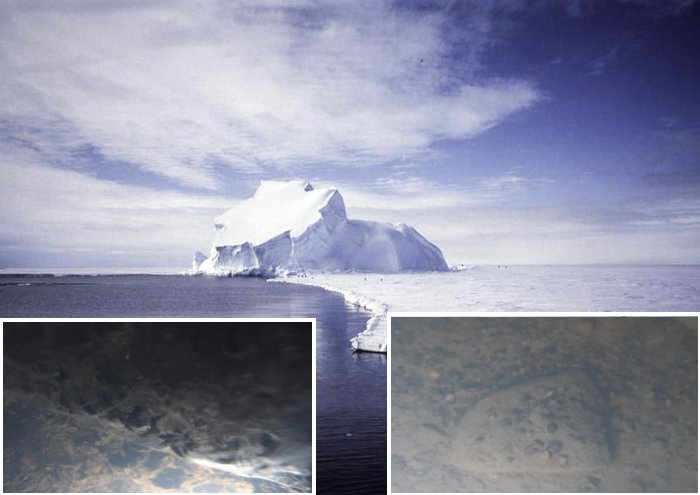Don Wood – MessageToEagle.com – Who can tell what is really hidden beneath the thick ice of Antarctica? The ice covers about 98% of the Antarctic continent and is the largest single mass of ice on Earth.
Alien organisms, ancient ruins, thousands year old artifacts, almost anything can be buried beneath the ice on this mysterious continent. When investigating Antarctica, researchers are always prepared to find the unexpected, as they did just now.
Eager to understand one of the world’s most extreme environments, scientists are now getting water samples from an Antarctic lake under 800 meters of ice. It’s not an easy task and it takes days of drilling, but progress is being made.

More than half of the planet’s fresh water is in Antarctica. While most of it is frozen in the ice sheets, underneath the ice pools and streams of water flow into one another and into the Southern Ocean surrounding the continent. Understanding the movement of this water, and what is dissolved in it as solutes, reveals how carbon and nutrients from the land may support life in the coastal ocean.
We know that life can thrive in the most extreme environments, but can it survive beneath the ice for longer periods?
“Life is tough — it can handle a lot,” says Trista Vick-Majors, assistant professor of Biological Sciences at Michigan Technological University, who is part of a team that gathered samples from the Whillans Subglacial Lake in West Antarctica.
An Alien-Like Dark, Cold World Beneath The Ice
Life beneath the ice puts up with a lot — there is no sunlight and pressure from the ice above in combination with heat radiating up from the Earth’s core melts the water to form the lake, so the temperature hovers just below freezing.
See also:
What Is The Source Of The Anomalous High-Energy Signals In Antarctica?
World’s Deepest Canyon On Land Discovered Under Antarctica’s Ice
Never-Before-Seen Creature Discovered Below The Surface Of Antarctica
Organic carbon, an important food source for microorganisms, is present in relatively high concentrations in Whillans Subglacial Lake, even if it lacks the verdant mess of a Midwest pond in late August.
Instead, as cameras dropped down the borehole of Mercer Subglacial Lake (a neighbor of Whillans) reveal, the subglacial lake is dark, cold, full of soft and fluffy sediment, and lined with bubble-filled ice.
How Can Antarctica Help Us Understand Extraterrestrial Life?
The lake bed looks more alien than earth. Studying extreme environments provides insight into what extraterrestrial life could be like or how earthly life might survive in similar conditions.
Not that humans, penguins or fish could handle it; life in the waters beneath Antarctica’s ice is mostly microbial. They still show signs of life — organic carbon and other chemical byproducts of living, eating, excreting and dying.
“There’s no photosynthesis under the ice in the ocean downstream of this lake — this limits the available food and energy sources in a way that you wouldn’t find in a surface lake or the open ocean,” Vick-Majors said.
Credit: Michigan Technological University
“The idea is that these subglacial lakes that are upstream could provide important sources of energy and nutrients for things living in the ice-covered regions of the Southern Ocean.”
“There is water and there is life under the ice,” Vick-Majors said. “These can teach us a lot about our planet because this is a great place to look at somewhat simplified ecosystems, without higher levels of organisms. So we can answer questions about life that can be really hard to answer in other places.”
The flip side is that physical-biological interactions can still be complicated in these environments.
The almost otherworldly subglacial lakes of West Antarctica grant insight into the possibilities for exoplanet environments while revealing the deep, water-kept secrets of our own world.
Written by Don Wood – MessageToEagle.com Staff






